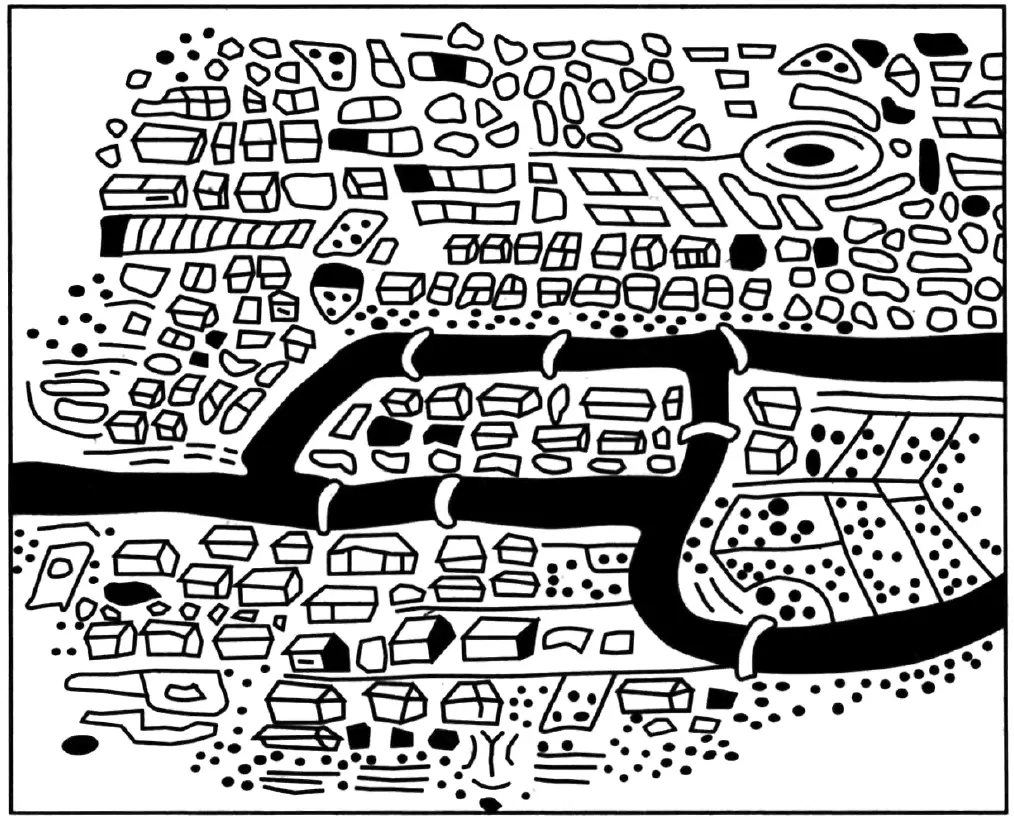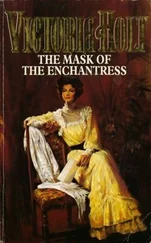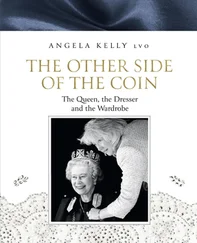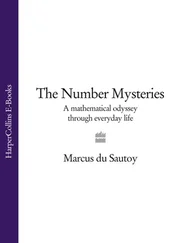Catherine the Great was interested not so much in mathematical proofs of the existence of God, but rather in Euler’s work on hydraulics, ship construction and ballistics. The Swiss mathematician’s interests ranged far and wide over the mathematics of the day. As well as military mathematics, Euler also wrote on the theory of music, but ironically his treatise was regarded as too mathematical for musicians and too musical for mathematicians.
One of his popular triumphs was the solution of the Problem of the Bridges of Königsberg. The River Pregel, known now as the Pregolya, runs through Königsberg, which in Euler’s day was in Prussia (it’s now in Russia, and called Kaliningrad). The river divides, creating two islands in the centre of the town, and the Königsbergers had built seven bridges to span it (see overleaf).
It had become a challenge amongst the citizens to see if anyone could walk around the town, crossing each bridge once and only once, and return to their starting point. It was Euler who eventually proved in 1735 that the task was impossible. His proof is often cited as the beginning of topology, where the actual physical dimensions of the problem are not relevant. It was the network of connections between different parts of the town that was important to Euler’s solution, and not their actual locations or distances apart – the map of the London Underground illustrates this principle.
It was numbers above all that captivated Euler’s heart. As Gauss would write:
The peculiar beauties of these fields have attracted all those who have been active there; but none has expressed this so often as Euler, who, in almost every one of his many papers on number-theory, mentions again and again his delight in such investigations, and the welcome change he finds there from tasks more directly related to practical applications.

The bridges of Konigsberg.
Euler’s passion for number theory had been stimulated by correspondence with Christian Goldbach, an amateur German mathematician who was living in Moscow and unofficially employed as secretary of the Academy of Sciences in St Petersburg. Like the amateur mathematician Mersenne before him, Goldbach was fascinated by playing around with numbers and doing numerical experiments. It was to Euler that Goldbach communicated his conjecture that every even number could be written as a sum of two primes. Euler in return would write to Goldbach to try out many of the proofs he had constructed to confirm Fermat’s mysterious catalogue of discoveries. In contrast to Fermat’s reticence in keeping his supposed proofs a secret from the world, Euler was happy to show off to Goldbach his proof of Fermat’s claim that certain primes can be written as the sum of two squares. Euler even managed to prove an instance of Fermat’s Last Theorem.
Despite his passion for proof, Euler was still very much an experimental mathematician at heart. Many of his arguments flew close to the mathematical wind, containing steps that weren’t completely rigorous. That did not concern him if it led to interesting new discoveries. He was a mathematician of exceptional computational skill and very adept at manipulating mathematical formulas until strange connections emerged. As the French academician François Arago observed, ‘Euler calculated without apparent effort, as men breathe, or eagles sustain themselves in the wind.’
Above all else, Euler loved calculating prime numbers. He produced tables of all the primes up to 100,000 and a few beyond. In 1732, he was also the first to show that Fermat’s formula for primes, , broke down when N = 5. Using new theoretical ideas, he managed to show how to crack this ten-digit number into a product of two smaller numbers. One of his most curious discoveries was a formula that seemed to generate an uncanny number of primes. In 1772, he calculated all the answers that you get when you feed the numbers from 0 to 39 into the formula x 2+ x + 41. He got the following list:
41, 43, 47, 53, 61, 71, 83, 97, 113, 131, 151, 173, 197, 223, 251, 281, 313, 347, 383, 421, 461, 503, 547, 593, 641, 691, 743, 797, 853, 911, 971, 1,033, 1,097, 1,163, 1,231, 1,301, 1,373, 1,447, 1,523, 1,601
It seemed bizarre to Euler that you could generate so many primes with this formula. He realised that the process would have to break down at some point. It might already be clear to you that when you input 41, the output has to be divisible by 41. Also, for x = 40 you get a number which is not prime.
Nonetheless, Euler was quite struck by his formula’s ability to produce so many primes. He began to wonder what other numbers might work instead of 41. He discovered that in addition to 41 you could also choose q = 2, 3, 5, 11, 17, and the formula x 2+ x + q would spit out primes when fed numbers from 0 to q − 2.
But finding such a simple formula for generating all the primes was beyond even the great Euler. As he wrote in 1751, ‘There are some mysteries that the human mind will never penetrate. To convince ourselves we have only to cast a glance at tables of primes and we should perceive that there reigns neither order nor rule.’ It seems paradoxical that the fundamental objects on which we build our order-filled world of mathematics should behave so wildly and unpredictably.
It would turn out that Euler had been sitting on an equation that would break the prime number deadlock. But it would take another hundred years, and another great mind, to show what Euler could not. That mind belonged to Bernhard Riemann. It was Gauss, though, who by initiating another of his classic lateral moves, would eventually inspire Riemann’s new perspective.
If centuries of searching had failed to unearth some magic formula which would generate the list of prime numbers, perhaps it was time to adopt a different strategy. This was what the fifteen-year-old Gauss was thinking in 1792. He had been given a book of logarithms as a present the previous year. Until a few decades ago, tables of logarithms were familiar to every teenager doing calculations in the schoolroom. With the advent of pocket calculators, they lost their place as an essential tool in everyday life, but several hundred years ago every navigator, banker and merchant would have been exploiting these tables to turn difficult multiplication into simple addition. Included at the back of Gauss’s new book was a table of prime numbers. It was uncanny that primes and logarithms should appear together, because Gauss noticed after extensive calculations that there seemed to be a connection between these two seemingly unrelated topics.
The first table of logarithms was conceived in 1614 in an age when sorcery and science were bedfellows. Their creator, the Scottish Baron John Napier, was regarded by local residents as a magician who dealt in the dark arts. He skulked around his castle dressed in black, a jet-black cock perched on his shoulder, muttering that his apocalyptic algebra foretold that the Last Judgement would fall between 1688 and 1700. But as well as applying his mathematical skills to the practice of the occult, he also uncovered the magic of the logarithm function.
If you feed a number, say 100, into your calculator and then press the ‘log’ button, the calculator spits out a second number, the logarithm of 100. What your calculator has done is to solve a little puzzle: it has looked for the number x that makes the equation 10 x = 100 correct. In this case the calculator outputs the answer 2. If we input 1,000, a number ten times larger than 100, then the new answer output by your calculator is 3. The logarithm goes up by 1. Here is the essential character of the logarithm: it turns multiplication into addition. Each time we multiply the input by 10, we get the new output by adding 1 to the previous answer.
Читать дальше













